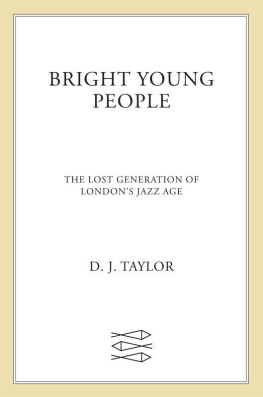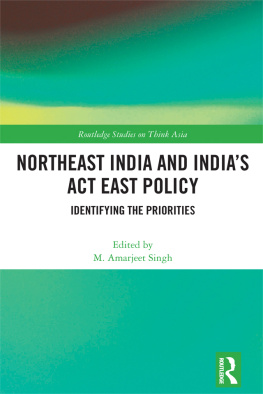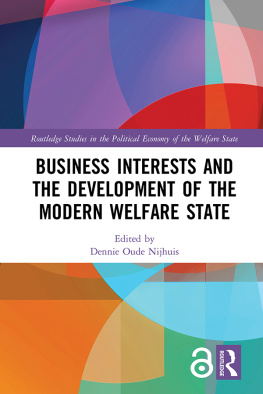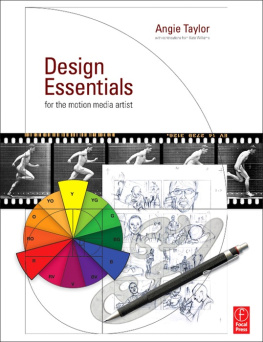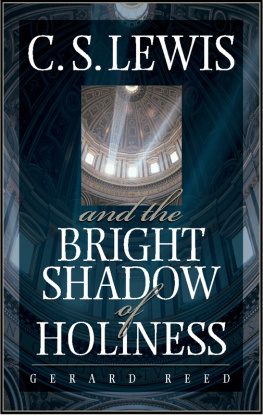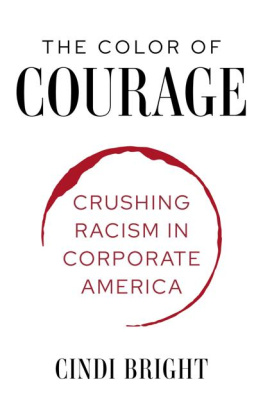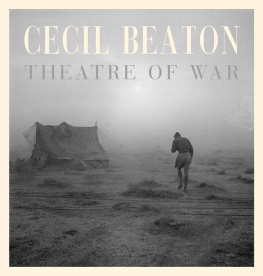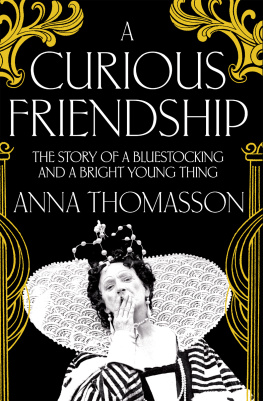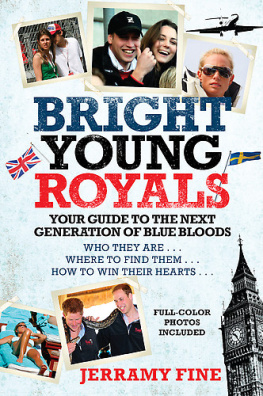PRAISE FOR BRIGHT YOUNG PEOPLE
[An] incisive social history... [A] richly detailed work.
CARYN JAMES , The New York Times Book Review
A poignant study of the elusive relationship between art and the social world from whence it springs... D. J. Taylor, author of a first-rate life of George Orwell, shows the sharp instincts of an expert biographer in his approach to 1920s English youth culture.
DAMIAN DA COSTA , The New York Observer
Absorbing... The book really takes hold when Taylor seizes on the actual trajectory of the lives of individual members, most... poignantly that of Elizabeth Ponsonby... The pages devoted to her, enriched by Taylors access to the Ponsonby family papers, are all the biography her lack of accomplishments and frittered-away youth warrant; yet they greatly deepen this study of a social phenomenon.
KATHERINE A. POWERS , The Boston Globe
Deft... [A] captivating new history of the age... Mr. Taylors book is at once elegy and critique. And this is just as it should be.
EMILY WILKINSON , The Washington Times
A note of genuine pathos is struck in [Taylors] description of how the increasingly straitened economic and political circumstances of the 30s began rendering this gaudy subculture obsolete. Immensely readable, and of real value as a sharply pointed cautionary tale.
Kirkus Reviews
There are... plenty of juicy anecdotes to go around... The text is enlivened by several Punch cartoons from the period, vividly depicting the hold these rich young partygoers once held on the publics imagination.
Publishers Weekly
[Conveys] precisely the aspect of the Bright Young People that is most difficult to give expression to on paper: not books or parties, but an atmosphere... An outlook, a gesture, an essence.
MARK BOSTRIDGE , The Independent on Sunday
Sharp, insightful... Atmospheric and thoroughly vivid...[Taylor] succeeds entirely in transporting his readers to the frenzied 1920s world of Bath and Bottle parties, scavenger hunts, scandalous nightclubs, and ruinous amounts of alcohol.
HONORIA ST. CYR , Open Letters Monthly
Compelling and ultimately touching... A witty and sensitive account of the pathos and the glamour of the generation fated to sorrow in sunlight.
ROSEMARY HILL , The Guardian
Excellent... The brightest of the Bright Young People [make] their fictional counterparts in Waughs Vile Bodies pale into insignificance... Taylor lays bare their cavortings with an archeological eye.
PHILIP HOARE , The Independent
Taylor, for years a journalist, is fascinated byand authoritative onthe lucrative relationship forged between the shrewdest of the Bright Young People and the glamour-hunting press... Shrewd and absorbing in his analysis of the way Waugh and Nancy Mitford...promoted the world they would soon skewer in fiction.
MIRANDA SEYMOUR , The Sunday Times (London)
Fascinating... A complex study of family, fear and breakdown... Taylors achievement is to remind us that there are few periods of recent history more culturally interesting than the years between the wars.
FRANCES WILSON , New Statesman
A goldmine... If I had to choose one book as a summing up of the BYP, it would be Taylors.
BEVIS HILLIER , The Spectator
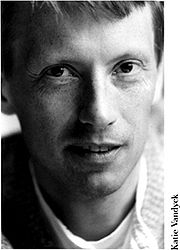
D. J. TAYLOR
BRIGHT YOUNG PEOPLE
D. J. Taylor is a literary critic and the author of two acclaimed biographies: Thackeray: The Life of a Literary Man and Orwell: The Life, which won the Whitbread Prize for Biography in 2003. He has written seven novels, including Kept: A Victorian Mystery. He lives in Norwich, England.
ALSO BY D. J. TAYLOR
FICTION
Great Eastern Land
Real Life
English Settlement
After Bathing at Baxters: Stories
Trespass
The Comedy Man
Kept: A Victorian Mystery
Ask Alice
NONFICTION
A Vain Conceit: British Fiction in the 1980s
Other People: Portraits from the Nineties (with Marcus Berkmann)
After the War: The Novel and England Since 1945
Thackeray: The Life of a Literary Man
Orwell: The Life
On the Corinthian Spirit: The Decline of Amateurism in Sport
BRIGHT YOUNG PEOPLE
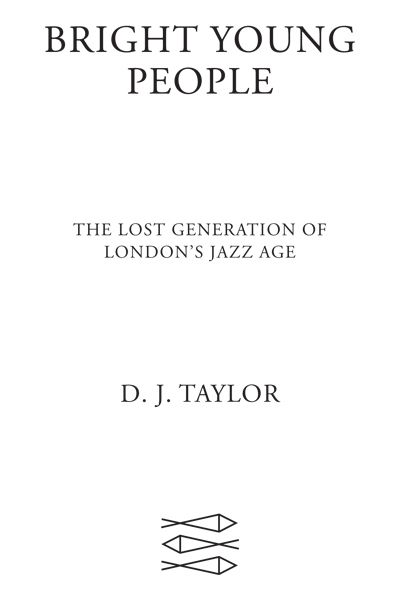
The author and publisher have provided this e-book to you for your personal use only. You may not make this e-book publicly available in any way. Copyright infringement is against the law. If you believe the copy of this e-book you are reading infringes on the authors copyright, please notify the publisher at: us.macmillanusa.com/piracy.
FARRAR, STRAUS AND GIROUX
18 West 18th Street, New York 10011
Copyright 2007 by D. J. Taylor
All rights reserved
Distributed in Canada by D&M Publishers, Inc.
Printed in the United States of America
Originally published in 2007 by Chatto & Windus, a division of the
Random House Group Limited, Great Britain
Published in 2009 in the United States by Farrar, Straus and Giroux
First American paperback edition, 2010
Grateful acknowledgment is made for permission to reprint text from the following: From Patrick, aetat: LXX and an unpublished letter by John Betjeman, reprinted by permission of Candida Lycett Green. Where Engels Fears to Tread by Cyril Connolly, reprinted by permission of Deidre Levi. Afternoon Men by Anthony Powell, reprinted by permission of the Powell family archive. Bright Young People by Nol Coward, reprinted by permission of The Overlook Press.
The Library of Congress has cataloged the hardcover edition as follows:
Taylor, D. J. (David John), 1960
Bright young people: the lost generation of Londons jazz age / D. J. Taylor.1st U.S. ed.
p. cm.
Originally published in 2007 by Chatto & Windus, a division of the Random House Group Limited, Great BritainT.p. verso.
Includes bibliographical references and index.
ISBN: 978-0-374-11683-5 (hardcover: alk. paper)
1. Great BritainSocial life and customs19181945. 2. Children of the richGreat BritainSocial life and customs20th century. 3. BohemianismGreat BritainHistory20th century. 4. Anxiety in youthGreat BritainHistory20th century. 5. Great BritainSocial conditions20th century. I. Title.
DA566.4.T39 2009
305.242094109042dc22
2008031366
Paperback ISBN: 978-0-374-53211-6
Designed by Gretchen Achilles
www.fsgbooks.com
1 3 5 7 9 10 8 6 4 2
eISBN 9781429958950
FOR LAURA PONSONBY
AND KATE RUSSELL
The Bright Young People have never been appraised at their true valuation.
PATRICK BALFOUR , Society Racket (1933)
An entire book could be written about that period in London between 1924 and 1930, the last days of post-war youth which I shall vulgarly call the bright young peoples era.
BRENDA DEAN PAUL , My First Life (1935)
The social life of London in the twenties must, to the censorious young of the present day, appear like a prolonged and rather vulgar orgie. Overindulgence in sex and gin was its main surface characteristic... The Universities produced an astonishing number of effeminates of the type known as fairies, and a mannerless crowd of young hooligans, with money to burn, was turned out by the larger public schools. Brought up in a dishonored world, without the salutary criticism of their fathers and elder brothers, these irresponsibles and their female counterparts, started a wild party which lasted as long as their money did. Finding the gossip writers ready to paragraph their antics they called themselves Bright Young People, popularised gate-crashing, took drugs, indulged or pretended to indulge in unnatural vices, and drove their cars about at high speed, when under the influence of drink, in the hope, if there was a smash, that the case would be reported in the Sunday newspapers... Time has dealt harshly with many of them.
Next page
